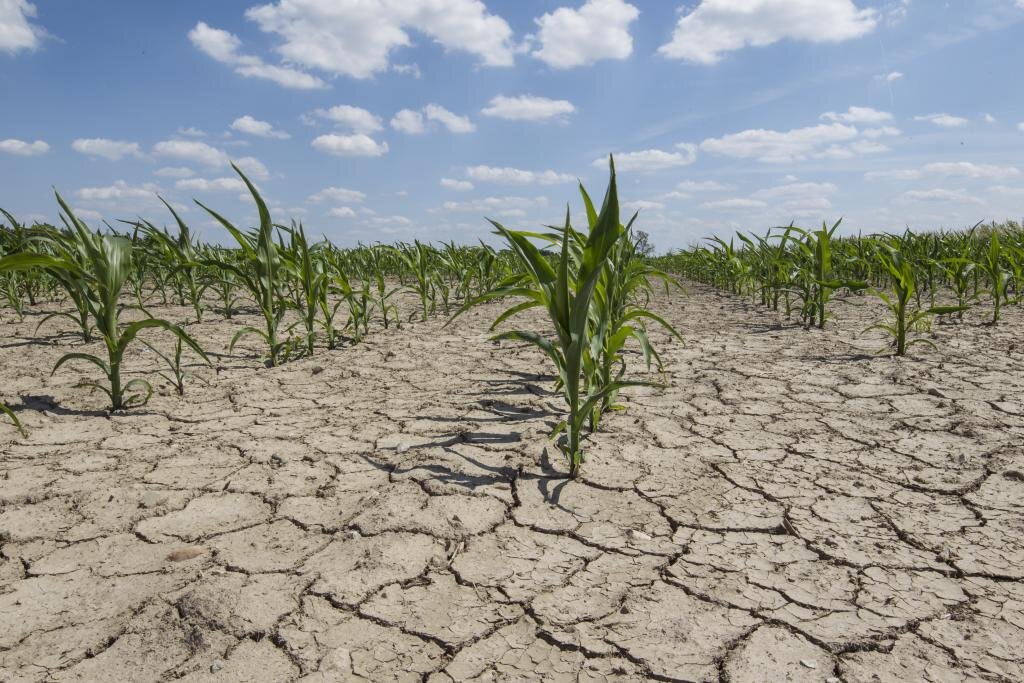
Historians have developed the idea that society became a civilization with the dawn of agriculture. When humans learnt agricultural techniques and became sedentary— turning away from the hunter gatherer societies— people began to have specified roles in society. With the invention of agriculture suddenly land became property, leading to the need for governments and social contracts.
Before agriculture natural vegetation was anarchic. Crops would grow sporadically in different environments and at different times of the year. Early forms of agriculture were seasonal, small and local. However, once agriculture became industrialized to tailor to our highly consumerist demands of constant food availability then the hazards of soil degradation began.
“It is estimated that nearly 2 billion ha of soil resources in the world have been degraded, namely approximately 22% of the total cropland, pasture, forest, and woodland.”
What is soil degradation?
Soil degradation is the decline in the soil condition caused by the improper use or management of the land. Soil is the basis of all terrestrial life. It is the Earth’s upper skin that gives fertility to trees and crops. It is also one of the world’s largest carbon sinks. Soil degradation is the physical, chemical, and biological decline in soil quality that can lead to:
- Infertility
- Water or wind erosion
- Soil and water contamination
- Changes in salinity, acidity, and alkalinity. *All of these changes can cause natural disasters, such as flooding.
Soil degradation can turn into soil erosion
Soil erosion costs European farmers €1.25 billion a year — European Commission
Soil erosion is a process that occurs when the upper layer of soil is displaced. When this happens, soil fertility is weakened, increasing river pollution which is followed by a decline in fish species, and more flooding. Some crops that increase soil erosion are: coffee, cotton, palm oil, soybean, and wheat.
“When agriculture fields replace natural vegetation, topsoil is exposed and can dry out. The diversity and quantity of microorganisms that help to keep the soil fertile can decrease, and nutrients may wash out. Soil can be blown away by the winds or washed away by rains.”—World Wildlife.org
The leading causes that drive soil degradation/erosion are:
Deforestation
Commonly, agricultural landscapes come from forest lands that have been all torn down to allow farmers to harvest the area. Some of these territories that used to be forests can’t suffice the fertility of crops that can worsen soil erosion. Once the agricultural landfill loses its fertility, the agricultural industry will move and find other forests to cut down the trees and continue with this cycle.
Overgazing
The fact of changing the usage of the land, from being a natural ecosystem to pasture land, can lead to high rates of erosion in which plants will not be able to grow any longer.
Agrochemicals
Pesticides change the composition of soil and disrupt the balance of microorganisms that help keep soil fertility. Also, agrochemicals can stimulate the growth of harmful bacteria. Often times these end up in our waterways and into rivers and seas, contaminating our fish and damaging entire marine ecosystems.
Soil degradation and erosion makes agriculture less productive and decreases arable land. The expansion of industrial agriculture has increased desertification and deforestation, polluted waterways, and heightened the chances of flooding. Deforestation to make space for cultivation means that the arable land will only last a short while before its top soil loses its fertility. Then the area will become an infertile desert, and more forest areas will be lost to make space for more crops—a clearly unsustainable model.
Solutions
Thankfully, there are alternatives to mainstream agriculture, such as biodynamic farms, regenerative agriculture, the permaculture movement, and organic certifications. All four methods espouse ethical farming techniques, they build upon the precedent of understanding nature and its processes. All four techniques heavily focus on nurturing the soil first.














1 thought on “What causes soil degradation?”
What makes land use & agriculture such big emitters of greenhouse gases?
Arup Kumar Chattopadhyay.
The largest single source of greenhouse gases from land use & agriculture is tropical deforestation. Like burning fossil fuels, burning forests (which are also made out of carbon) releases enormous amounts of CO2 to the atmosphere, contributing to climate change. Today, most of the world’s deforestation is for new agricultural production (soybean fields to grow animal feed, oil palm plantations, and cattle pastures), as well as for timber harvesting and mining.
Biological methane (CH4) emissions are the second largest source of greenhouse gases from land use & agriculture. Most of these emissions come from cattle and sheep (who burp methane), manure piles, rice fields, and biomass burning.
The third largest source of greenhouse gases in this sector stems from nitrous oxide (N2O). Nitrous oxide is mainly released by overusing fertilizers and manure in croplands.
Other things linked to land and food contribute to climate change too, but are smaller. For example, the fossil fuels used in farm machinery, making agricultural chemicals, or transporting food are important, but are smaller emitters than these three primary sources.
Imagine that: Electricity generation and land use & agriculture are basically equal in terms of their global impact on climate change, yet addressing emissions from electricity gets far more attention and funding.
Because land use and agricultural practices are such big emitters of greenhouse gases, they need to be a big part of our solutions to climate change. And the most important things we can do to reduce emissions from land use & agriculture include:
Conserving and restoring tropical forests. The biggest source of greenhouse gases from this sector comes from clearing tropical forests. More attention is needed to conserve and restore them, especially in Brazil and Indonesia. Brazil deserves special attention, as dramatic changes in their government could fuel a resurgence in deforestation.
New methods of animal agriculture. Animal agriculture is a major source of methane — especially from cattle, sheep, and manure piles. New ways of raising cattle and sheep — including new feed additives (such as seaweeds that appear to lower methane emissions) and new grazing techniques (more on this below) — can help a great deal. Better manure management is needed as well.
New methods of rice cultivation. Rice fields are also a major source of methane emissions, and some techniques may be able to reduce their emissions. More research in genetic and agronomic improvements to rice cultivation is needed.
More prudent use of nitrogen fertilizers and manure in farming. We can reduce nitrous oxide (N2O) emissions from agriculture by improving the use of chemical fertilizers and manure in the world’s croplands. Large areas of the United States, China, and India release nitrous oxide because they are applying far too much fertilizer. Cutting back on fertilizer use can maintain the same crop yields while reducing greenhouse gas emissions and the runoff of nitrogen and phosphorus into local waterways.
We can also implement solutions in the broader food system:
Reducing food waste. It is estimated that about 30 percent of the world’s food is lost after harvest, whether in transport, warehouses, markets, homes, schools, businesses, or restaurants. This means that roughly 30% of the land, water, chemicals, and greenhouse gas emissions associated with food production isn’t necessary. If we cut food waste, we may be able to cut the resource demands and environmental impacts of agriculture. What’s important here is to target the most resource-intensive and polluting food items, especially red meat and dairy products.
Eating more plant-rich diets. We can also reduce the impacts of agriculture on the environment through our dietary choices, especially by reducing the amount of red meat and dairy products we eat. While it is theoretically possible (see more below) to raise cattle and sheep with fewer greenhouse gas emissions — and maybe in ways that sequester more greenhouse gases than they emit — the vast majority of the world’s animal agriculture does not yet do this. So, as a first step, cutting our consumption of these products can help address climate change. Now, as on today our future depends on the following concept implementations:-
1. Using ZBNF technology in all possible PKVY (pamparagat krishi vikash) thruogh FPO (farmer producer organisation).
2. Using Monocotyledon: Dycotiyedon @ 3:1 ratio to grow multilayer farming at each piece of land.
3. Using Bio-Char (prepared through internal combusting process, to minimise emission to the atmosphere) to the soil to regenerate its originality, prepared at scales in each FPO cluster.
4. Fodder to be integrated along with human food yielding crops, e.g: Babycorn. Hay & silage preperation from waste of plant part (partly) and recycling the remaing organic waste in situ.
5. Use of decomposed night soil stored in alternative chembrs under "Swacch Bharat Aviyan" as complete source of manure, which have the potentiality to increase 40 – 800 % yield growth.
These above mentioned ways(1 to 5) are to make mandatory for our agriculture, to make it really sustainable & to keep this planet habitable for our next generations to whom we are accountable too.
Thanks.
Arup.K.C.